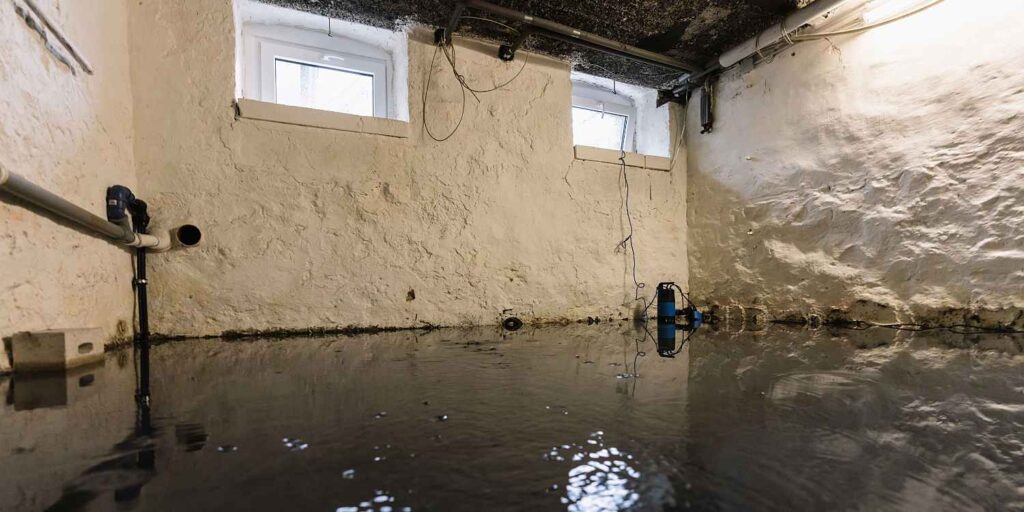Ensure your home’s structural integrity with effective basement waterproofing solutions. Protect against water damage and mold growth. Contact us for expert basement waterproofing services today. However, basements are particularly vulnerable to water damage due to their below-ground location. To safeguard your home and belongings from potential water intrusion, investing in a basement waterproofing system is essential. With various options available, it’s crucial to understand each type to make an informed decision tailored to your specific needs. In this guide, we’ll explore different basement waterproofing systems and help you choose the right option for your home.
Understanding Basement Waterproofing
Before delving into the types of waterproofing systems, it’s essential to grasp the fundamental principles behind basement waterproofing. The primary goal of waterproofing is to prevent water from entering the basement or to manage any water that does infiltrate effectively. By creating barriers and drainage systems, waterproofing helps maintain a dry and stable environment, protecting your home’s structural integrity and preventing issues like mold and mildew growth.
Types of Basement Waterproofing Systems

- Interior Sealants and Waterproofing Coatings: Interior sealants and waterproofing coatings are applied to the inner walls of the basement to create a barrier against moisture. These products are typically easy to apply and are suitable for minor dampness issues. However, they may not be effective for significant water intrusion problems or structural issues.
- Interior Drainage Systems: Interior drainage systems are installed along the perimeter of the basement floor to collect and redirect water to a sump pump. These systems consist of a network of drains and pipes encased in gravel or a drainage mat. Interior drainage systems are effective at managing groundwater and preventing it from pooling on the basement floor.
- Exterior Waterproofing Membranes: Exterior waterproofing membranes are installed on the outside walls of the basement to create a barrier against water intrusion. These membranes are typically made of asphalt-modified polyurethane or rubberized asphalt and are applied before backfilling the soil around the foundation. Exterior waterproofing membranes provide comprehensive protection against water penetration and are ideal for new construction or extensive renovations.
- Exterior Drainage Systems: Exterior drainage systems, also known as French drains, are installed around the perimeter of the foundation to collect and divert groundwater away from the basement. These systems consist of perforated pipes surrounded by gravel or drainage fabric, which allows water to flow freely while preventing soil erosion. Exterior drainage systems are highly effective at keeping water away from the foundation walls, reducing the risk of water infiltration into the basement.
- Crawl Space Encapsulation: If your home has a crawl space rather than a full basement, crawl space encapsulation may be necessary to prevent moisture issues. This process involves sealing off the crawl space with a moisture barrier, insulating the walls, and installing a dehumidifier to control humidity levels. Crawl space encapsulation helps create a dry and healthy environment, reducing the risk of mold, wood rot, and structural damage.
Choosing the Right Basement Waterproofing System
When selecting a basement waterproofing system for your home, several factors should be considered:
- Severity of Water Issues: Assess the extent of water intrusion problems in your basement. For minor dampness issues, interior sealants or drainage systems may suffice. However, if you’re dealing with significant water infiltration or structural damage, exterior waterproofing solutions may be necessary.
- Budget: Determine your budget for waterproofing projects. While some solutions, like interior sealants, are relatively affordable, others, such as exterior waterproofing membranes, may require a more significant investment. Consider the long-term benefits and cost-effectiveness of each option.
- Foundation Type: The type of foundation your home has can influence the choice of waterproofing system. For example, homes with poured concrete foundations may benefit from exterior waterproofing membranes, while those with block foundations may require interior drainage systems.
- Local Climate and Soil Conditions: Consider the climate and soil conditions in your area. Homes in regions with heavy rainfall or high water tables may require more robust waterproofing systems to withstand moisture pressure effectively.
- Professional Consultation: Consult with a reputable basement waterproofing contractor to assess your specific needs and recommend the most suitable solution for your home. A professional inspection can help identify underlying issues and ensure that the chosen waterproofing system addresses them effectively.
In conclusion, basement waterproofing is a crucial investment in protecting your home from water damage and maintaining its structural integrity. By understanding the different types of basement waterproofing systems and considering factors like the severity of water issues, budget, and foundation type, you can choose the right solution for your home’s unique needs. Whether it’s interior sealants, exterior membranes, or drainage systems, investing in proper basement waterproofing will provide peace of mind and safeguard your home for years to come.





